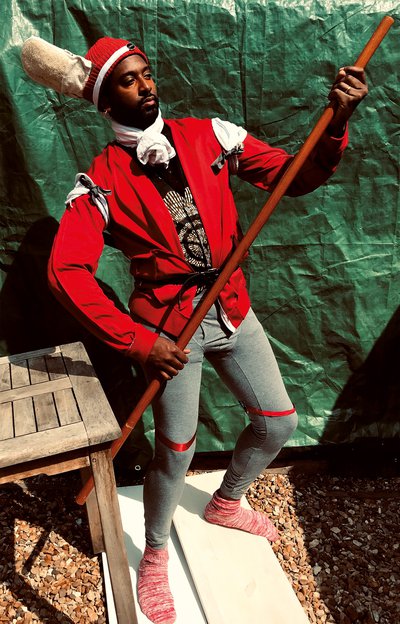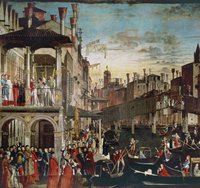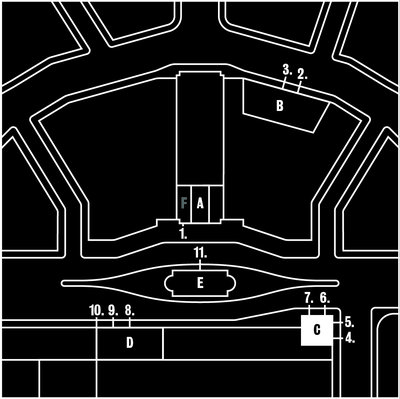06 The Gondolier Reworked with 'Black Purpose' pin badge and Cote D’Ivoire textiles


The original image is a detail from a larger street scene by the Venetian artist Vittore Carpaccio, Miracle of the True Cross at the Rialto Bridge, painted in 1494.
The figure in the image is a gondolier, who may have been enslaved, or formerly enslaved. From the 1440s, Venice recorded increasing numbers of Black enslaved peoples, who were mostly occupied in domestic service, operating as coachmen, grooms or – significantly - gondoliers.
It was common for enslaved people to be freed on the death of the master or mistress of record, but once freed the path to financial security was limited. Gondoliers were highly skilled professionals and the position was one of few we know that was available to formerly enslaved people.
This image is our touchstone for thinking about ‘visibility’, because the figure in it was marginal, both to how we have previously thought about Renaissance society and to the painting depicted. The gondolier speaks to the omnipresence or ubiquity of Black people on Renaissance city streets and reminds us that diverse histories can hide in plain sight.

Vittore Carpaccio, 'The Miracle of the Relic of the True Cross on the Rialto Bridge', 1494. Oil on canvas, Bridgeman Images.

Strand Campus, Strand, London WC2R 2LS
KCLSU shop, Strand